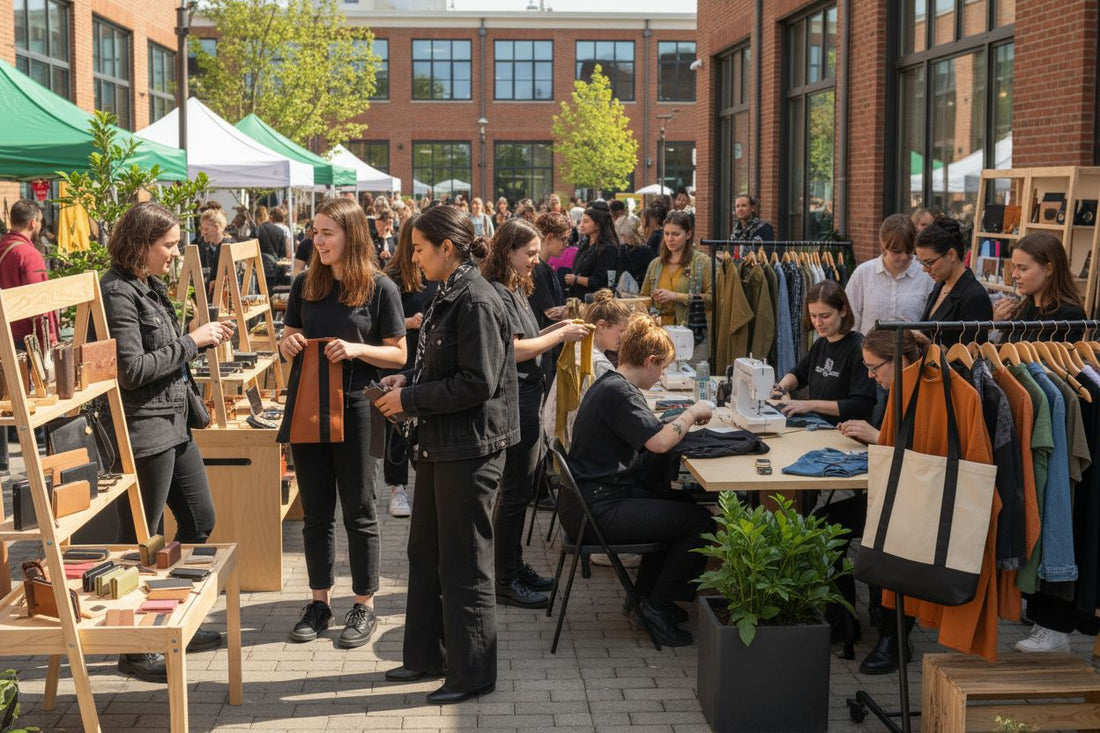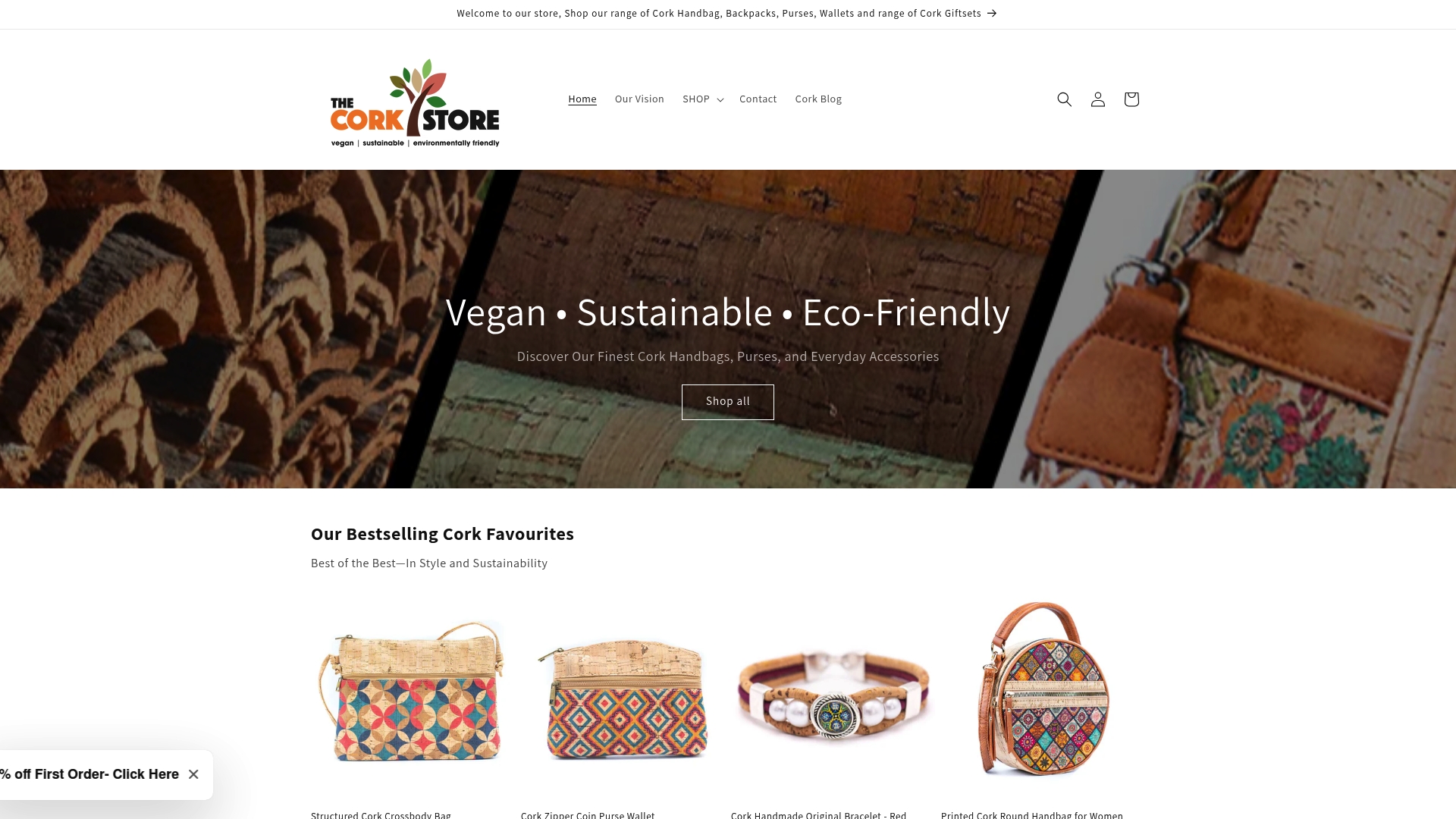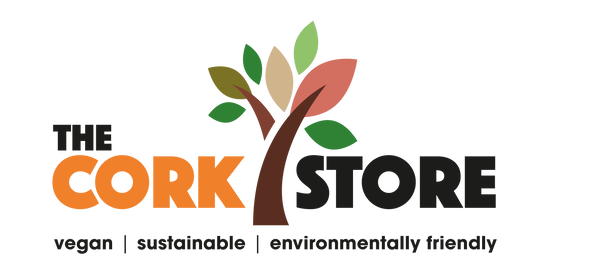
7 Key Sustainable Fashion Trends 2025 for Eco Shoppers
Share
Fashion is facing a dramatic makeover as more people seek ways to align their wardrobes with ethical and environmental values. The global ethical fashion market is predicted to reach $9.8 billion by 2027 as shoppers look beyond trends toward sustainable alternatives. From vegan accessories and upcycled pieces to transparent supply chains and circular fashion habits, these smart choices let you look stylish while making a positive impact on the planet.
Quick Summary
| Takeaway | Explanation |
|---|---|
| 1. Choose sustainable vegan materials | Opt for accessories made from eco-friendly materials like cork to reduce environmental impact and promote animal welfare. |
| 2. Support brands with transparency | Select fashion brands that openly share their manufacturing practices to ensure ethical production and fair labor conditions. |
| 3. Engage in circular fashion practices | Participate in clothing swaps, recycling, and repair initiatives to extend the life of garments and reduce waste. |
| 4. Embrace slow fashion principles | Invest in high-quality, timeless clothing designed for longevity rather than fleeting trends for a sustainable wardrobe. |
| 5. Opt for multi-use accessories | Choose versatile accessories made of durable materials to minimize waste and enhance functionality in your wardrobe. |
Table of Contents
- Choose Vegan Materials Like Cork For Accessories
- Look For Brands With Transparent Supply Chains
- Try Upcycled And Recycled Fashion Pieces
- Support Slow Fashion And Timeless Designs
- Embrace Natural Dyes And Eco-Friendly Finishes
- Prioritize Multi-Use And Durable Accessories
- Engage In Circular Fashion: Repair, Swap, Recycle
1. Choose Vegan Materials Like Cork for Accessories
Imagine transforming your fashion choices into a powerful statement for sustainability. Vegan materials like cork are revolutionising the accessory world, offering an ethical alternative that doesn’t compromise on style or quality.
Plant-based leather alternatives are gaining significant momentum in the fashion industry. According to recent research, materials such as cork, mushroom leather, seaweed, and fruit peels are emerging as eco-friendly, cruelty-free options for creating stunning accessories. These innovative materials provide a renewable and biodegradable solution that directly challenges traditional leather production.
Cork leather stands out as an exceptional sustainable material. Harvested from the bark of cork oak trees, this remarkable material is completely renewable and causes no harm to the trees during extraction. Read more about vegan leather alternatives to understand its incredible environmental benefits.
When you choose vegan materials like cork, you’re making a tangible impact. These materials offer numerous advantages:
- Zero animal cruelty in production
- Biodegradable and environmentally friendly
- Lightweight and surprisingly durable
- Unique textural qualities that rival traditional leather
By selecting accessories crafted from sustainable materials, you’re not just making a fashion choice. You’re casting a vote for a more responsible, compassionate approach to design and consumption. Cork accessories represent more than just a trend they’re a meaningful commitment to protecting our planet while looking absolutely stylish.
2. Look for Brands with Transparent Supply Chains
Supply chain transparency has become the new gold standard in sustainable fashion. As consumers, we have the power to drive meaningful change by supporting brands that openly share their manufacturing processes, worker conditions, and environmental practices.
According to the 2025 “What Fuels Fashion?” report, brand transparency remains critically low. The average brand transparency hovers at just 14%, which means most fashion companies are still hiding crucial information about their production methods. Learn how to spot sustainable fashion practices and become a more informed consumer.
Transparency isn’t just about information sharing it represents a fundamental commitment to ethical and responsible production. Brands like ABLE and H&M are leading the way by disclosing detailed information about their supplier factories, worker wages, and manufacturing processes. This level of openness allows consumers to make informed decisions that align with their values.
When evaluating a brand’s transparency, look for these key indicators:
- Detailed information about manufacturing locations
- Clear wage and worker welfare policies
- Published environmental impact reports
- Third party certifications verifying ethical practices
- Open communication about material sourcing
By choosing brands with transparent supply chains, you’re doing more than purchasing a product. You’re supporting a systemic shift towards accountability, fair labor practices, and environmental responsibility. Your purchasing power becomes a powerful tool for driving positive change in the fashion industry.
3. Try Upcycled and Recycled Fashion Pieces
Upcycled fashion is more than a trend it is a revolutionary approach to sustainable wardrobe management. Imagine transforming discarded materials into stunning, one of a kind fashion pieces that tell a unique story while reducing environmental waste.
According to market research, the global upcycled fashion market is experiencing remarkable growth. Projected to reach US$21.16 billion by 2032 with a 10.1% compound annual growth rate, upcycled fashion is quickly becoming a mainstream phenomenon. Explore the role of eco-friendly materials in fashion to understand this exciting movement.
Major brands like Zara and H&M are now embracing upcycling, using advanced AI technologies to optimize reuse collections. This shift demonstrates that sustainable fashion is no longer a niche market but a significant industry transformation driven by conscious consumers.
Upcycling offers multiple benefits for the environmentally aware shopper:
- Reduces textile waste in landfills
- Creates unique, personalized fashion pieces
- Supports circular economy principles
- Lowers carbon footprint of clothing production
- Encourages creative and innovative design approaches
By choosing upcycled fashion, you are not just making a style statement. You are participating in a global movement that reimagines waste as an opportunity for creativity, sustainability, and meaningful consumption.
4. Support Slow Fashion and Timeless Designs
Slow fashion represents a powerful revolution against the disposable clothing culture. It is about investing in quality pieces that transcend temporary trends and celebrate craftsmanship, durability, and timeless elegance.
A significant cultural shift is emerging where consumers are prioritizing quality and longevity over fast fashion’s fleeting styles. Explore sustainable fashion essentials to understand this transformative approach to personal style.
The movement gained remarkable momentum in 2025, with France hosting its first Slow Fashion Week in Marseille. This groundbreaking event showcased locally produced, recycled, and upcycled garments in public spaces, challenging traditional high carbon fashion weeks and demonstrating a commitment to sustainable design.
Slow fashion is about making intentional choices that benefit both you and the planet. Consider these key principles:
- Prioritize high quality materials
- Select versatile pieces that complement multiple outfits
- Invest in clothing designed for long term wear
- Support local and ethical manufacturers
- Learn basic clothing repair skills
By embracing slow fashion, you are not just curating a wardrobe. You are making a statement about your values, supporting responsible production, and reducing the environmental impact of your clothing choices. Your garments become more than fabric they become stories of conscious consumption and timeless style.
5. Embrace Natural Dyes and Eco-Friendly Finishes
Natural dyes represent a vibrant revolution in sustainable textile production, transforming how we think about colour, creativity, and environmental responsibility. Imagine wearing clothing that tells a story through colours extracted directly from nature’s most incredible sources.
Innovative designers are leading this colourful sustainable movement. Designer Ateev Anand, for instance, creates stunning couture using plant based dyes sourced from unexpected materials like temple flower offerings, coconut skins, and onion peels. Learn about sustainable materials that are changing fashion and explore how natural innovations are reshaping textile production.
The ecological impact of natural dyes extends far beyond aesthetic appeal. Traditional synthetic dyes release harmful chemicals into waterways, whereas plant based alternatives offer a clean, biodegradable solution that supports environmental health. Designers like Lucy Tammam are pioneering techniques that produce fully compostable textile products using organic certified dyes and cruelty free materials.
When exploring natural dyes, consider these exciting possibilities:
- Experiment with locally sourced botanical dyes
- Support artisan textile makers using traditional techniques
- Choose garments with transparent dyeing processes
- Learn basic natural dyeing techniques
- Prioritize brands committed to eco friendly finishing methods
By embracing natural dyes, you are not just selecting a colour. You are participating in a global movement that celebrates traditional craftsmanship, environmental stewardship, and the incredible palette nature provides.
6. Prioritize Multi-Use and Durable Accessories
Versatility is the new luxury in sustainable fashion. Multi-use accessories represent a powerful approach to conscious consumption, offering style, functionality, and environmental responsibility in a single, thoughtfully designed piece.
The fashion industry is experiencing a transformative shift towards accessories that adapt and endure. Upcycled belts, bags, and shoes crafted from repurposed materials are becoming increasingly popular, reflecting a growing consumer demand for long lasting, flexible fashion pieces. Explore sustainable materials that revolutionise fashion to understand this innovative approach.
Designers are reimagining how accessories can serve multiple purposes. Innovative techniques like reworking surplus workwear into structured pieces demonstrate the potential for durability and versatility. Imagine a bag that transforms from a day tote to an evening clutch or a belt that can be styled multiple ways.
When selecting multi-use accessories, consider these key strategies:
- Choose neutral colours for maximum versatility
- Prioritize high quality, durable materials
- Select pieces with adjustable or modular designs
- Look for accessories with multiple carrying options
- Invest in timeless styles over trendy momentary looks
By prioritizing multi-use and durable accessories, you are not just making a fashion statement. You are making a commitment to reducing waste, supporting sustainable design, and creating a more intentional wardrobe that reflects your values and creativity.
7. Engage in Circular Fashion: Repair, Swap, Recycle
Circular fashion represents a revolutionary approach to clothing consumption that transforms waste into opportunity. Instead of discarding garments, you can actively participate in a sustainable ecosystem that extends the life of every textile piece.
Events like Marseille’s Slow Fashion Week are highlighting the power of community driven circular practices. By showcasing upcycling, repair, and clothing swap initiatives, these movements are creating awareness about reducing textile waste and reimagining fashion consumption. Learn more about sustainable fashion essentials to understand how you can make a difference.
Transparency reports from fashion industry leaders emphasise the critical role of take-back schemes and recycling systems. Brands are increasingly urged to close the production loop, transforming linear consumption into a circular model that minimises environmental impact.
To engage in circular fashion, consider these practical strategies:
- Learn basic clothing repair skills
- Participate in local clothing swap events
- Support brands with take-back and recycling programmes
- Donate gently used clothing to responsible organisations
- Choose accessories and garments designed for easy repair
By embracing circular fashion, you are not just managing your wardrobe. You are participating in a global movement that reimagines textile consumption, reduces waste, and creates a more sustainable future for our planet.
Below is a comprehensive table summarising sustainable fashion approaches discussed in the article.
| Strategy | Implementation | Benefits/Outcomes |
|---|---|---|
| Vegan Materials | Use cork, mushroom leather, seaweed, etc. | Cruelty-free, biodegradable, durable, stylish |
| Supply Chain Transparency | Choose brands sharing manufacturing details | Ethical production, informed consumer choice |
| Upcycled Fashion | Opt for upcycled pieces from major brands | Reduces waste, supports creativity, circular economy |
| Slow Fashion | Invest in quality, timeless pieces | Supports craftsmanship, reduces environmental impact |
| Natural Dyes | Select garments coloured with plant-based dyes | Environmentally friendly, unique aesthetics |
| Multi-Use Accessories | Choose versatile, durable designs | Reduces waste, enhances functionality |
| Circular Fashion | Engage in repair, swap, recycle initiatives | Extends garment life, reduces waste |
Elevate Your Sustainable Wardrobe with Cork Accessories
If you are seeking genuine change in your fashion journey but find it hard to locate truly eco-friendly accessories, you are not alone. The trends outlined in “7 Key Sustainable Fashion Trends 2025 for Eco Shoppers” highlight a pressing desire for materials that are vegan, innovative, and durable without harming the planet. Many readers want cruelty-free alternatives and transparent supply chains, but struggle to find products that match both their values and personal style. Cork, as discussed in the article, answers these needs superbly with its renewability and unique aesthetics.

Discover how easy it can be to make a style statement that aligns with your values today. The curated collection at The Cork Store features elegant handbags, versatile backpacks, and beautiful wallets, all crafted from vegan cork. Each piece represents a step towards slow fashion and a more circular wardrobe. Browse our shop and see for yourself the difference that eco-conscious design makes. Start exploring at The Cork Store homepage and get inspired to create a positive impact with every accessory you choose.
Frequently Asked Questions
What are the key sustainable fashion trends to watch in 2025?
The key sustainable fashion trends for 2025 include choosing vegan materials like cork, supporting brands with transparent supply chains, incorporating upcycled and recycled fashion pieces, and embracing natural dyes. To stay informed, regularly research these trends and look for ways to incorporate them into your wardrobe.
How can I identify brands with transparent supply chains?
You can identify brands with transparent supply chains by looking for detailed information on their manufacturing locations, clear wage policies, and published environmental impact reports. Seek out brands that openly communicate these practices, as they are more likely to adhere to ethical manufacturing standards.
What is upcycled fashion and why is it important?
Upcycled fashion involves transforming discarded materials into new, stylish clothing or accessories, reducing textile waste and promoting sustainability. Consider adding one upcycled item to your wardrobe this month to support this eco-friendly approach and contribute to a circular fashion model.
How do natural dyes impact sustainability in fashion?
Natural dyes are more eco-friendly than synthetic dyes, as they avoid harmful chemicals and are often biodegradable. To make more sustainable choices, opt for garments dyed with plant-based colors and educate yourself on natural dyeing techniques that you can even try at home.
What are practical steps to participate in circular fashion?
To participate in circular fashion, start by learning basic clothing repair skills, and consider attending local clothing swap events or supporting take-back initiatives. Set a goal to repair at least one piece of clothing or swap items with friends to extend the life of your wardrobe this year.
How can I prioritize multi-use and durable accessories?
Prioritizing multi-use and durable accessories involves selecting versatile items made from high-quality materials that serve multiple functions. Choose at least one accessory that can be styled in different ways or used for various occasions to enhance the sustainability and functionality of your collection.
Recommended
- Understanding Sustainable Fashion Essentials for Eco-Conscious Living – The Cork Store
- How to Spot Sustainable Fashion: A Step-by-Step Guide – The Cork Store
- Understanding the Role of Eco-Friendly Materials in Fashion – The Cork Store
- Understanding Why Choose Sustainable Bags for a Greener Future – The Cork Store
